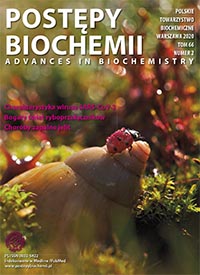The role of chemerin and its antibacterial derivatives in maintaining epithelial barrier function
DOI:
https://doi.org/10.18388/pb.2020_323Abstract
The epithelial tissues have continuous contact with external environment, including pathogenic microorganisms. Endogenous antimicrobial proteins and peptides produced by epithelial cells play a key role in controlling microbial burden and composition, either directly, or by engaging immune cells. These include active derivatives of multifunctional protein chemerin, which is equipped with both antimicrobial and chemotactic function. Given an increasing number of infections caused by antibiotic-insensitive microorganisms, such as methicillin- resistant S. aureus (MRSA), it is important to fully understand how these epithelia-associated microorganisms are controlled at barrier sites, including skin and oral cavity. Chemerin-derived synthetic peptide 4 (p4) covering central Val66-Pro85 chemerin sequence exhibits broad range of antimicrobial activity against skin- and oral cavity- associated bacteria, including MRSA strains, suggesting its therapeutic potential for bacteria-mediated barrier organs pathologies. In this article we present the overview of protective functions of chemerin and chemerin-derived peptides in the epithelial tissues.
Downloads
Published
Issue
Section
License
Copyright (c) 2020 Advances in Biochemistry

This work is licensed under a Creative Commons Attribution 4.0 International License.
All journal contents are distributed under the Creative Commons Attribution-ShareAlike 4.0 International (CC BY-SA 4.0) license. Everybody may use the content following terms: Attribution — You must give appropriate credit, provide a link to the license, and indicate if changes were made, ShareAlike — If you remix, transform, or build upon the material, you must distribute your contributions under the same license as the original. There are no additional restrictions — You may not apply legal terms or technological measures that legally restrict others from doing anything the license permits.
Copyright for all published papers © stays with the authors.
Copyright for the journal: © Polish Biochemical Society.




